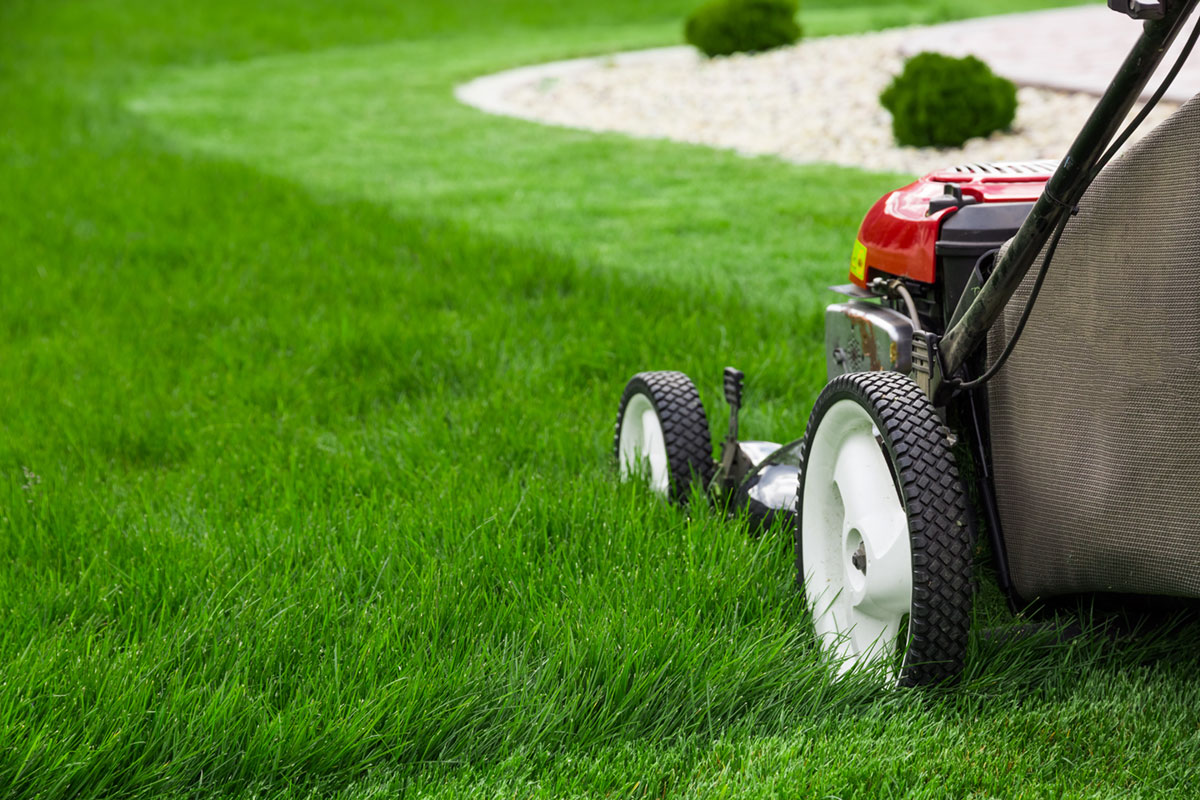Tips for Efficient Lawn Mowing
POSTED ON March 25, 2019 BY Galena Lawn Care
The first day of spring started on March 20th, which is traditional for people to start spring cleaning. Everything from getting rid of old clothes, giving your home a thorough cleaning inside and out; and caring for your lawn. However, lawn care is one priority throughout the year. Still, the spring and summer months are crucial for your garden’s health because warmer temperatures and lawn neglection can use your lawn to look abandoned and untidy. The pattern you mow your lawn determines the attractiveness of your lawn.
Remove debris
Before you crank up your lawn mower, clean up your yard. Remove branches, leaves, trash, and other loose objects using a rake. Cleaning up is the first thing you do because mowing with debris in the yard could cause injury. Any object lying on the ground is propelled up to 200 miles per hour out of the mower’s discharge chute. Immovable objects, such as pipes, are marked, so you don’t accidentally run over it with your mower.
Mow in the morning
Mow your lawn is in the morning after the dew has dried on grass. The weather is usually pleasant in the mornings, especially during the summer, and most people enjoy mowing the lawn at that time before the brutal heat kicks in. Different people have different advice on how often to mow the lawn. Some suggest a set schedule of once or twice a week, while others are guided by the grass’ height to determine when it’s time to cut the grass.
Use the correct mowing pattern
From outside looking in, using a lawn mower seems easy; you’re merely pushing it around the yard. Though it’s not hard to mow a lawn, there’s a method to it. If you casually walk around with the mower, grass will catch and clog the blades. Mowing the lawn in the same pattern each time may result in the mower wheels eventually forming small ruts in your yard. Using a lawn mower can be a workout in itself. You’re always moving the mower in a back-and-forth pattern. Changing your pattern prevents the blades from beating the grass in the same direction each time.
Clean up after mowing
After mowing your yard, it’s tempting to leave everything as-is because you’re tired and ready to move on with your day. But spend a couple of minutes sweeping up grass clippings from your driveway and walkway. Instead of disposing of the clippings, place them on your lawn. You may think this is counterproductive since you just cleaned your lawn before mowing. But studies have shown that mulched grass clippings act as fertilizer, breaking down into the soil to provide nutrients.
It’s not hard to mow your lawn, though there’s a technique to doing it. Instead of mowing in a circular pattern, using a back-and-forth motion to ensure you’re cutting the grass evenly. Another suggestion is to use half-lap passes; this means the new pass will overlap the previous pass by half the mower width. The technique will ensure you cut anything missed in the first pass.
Read more: Advantages of mulching